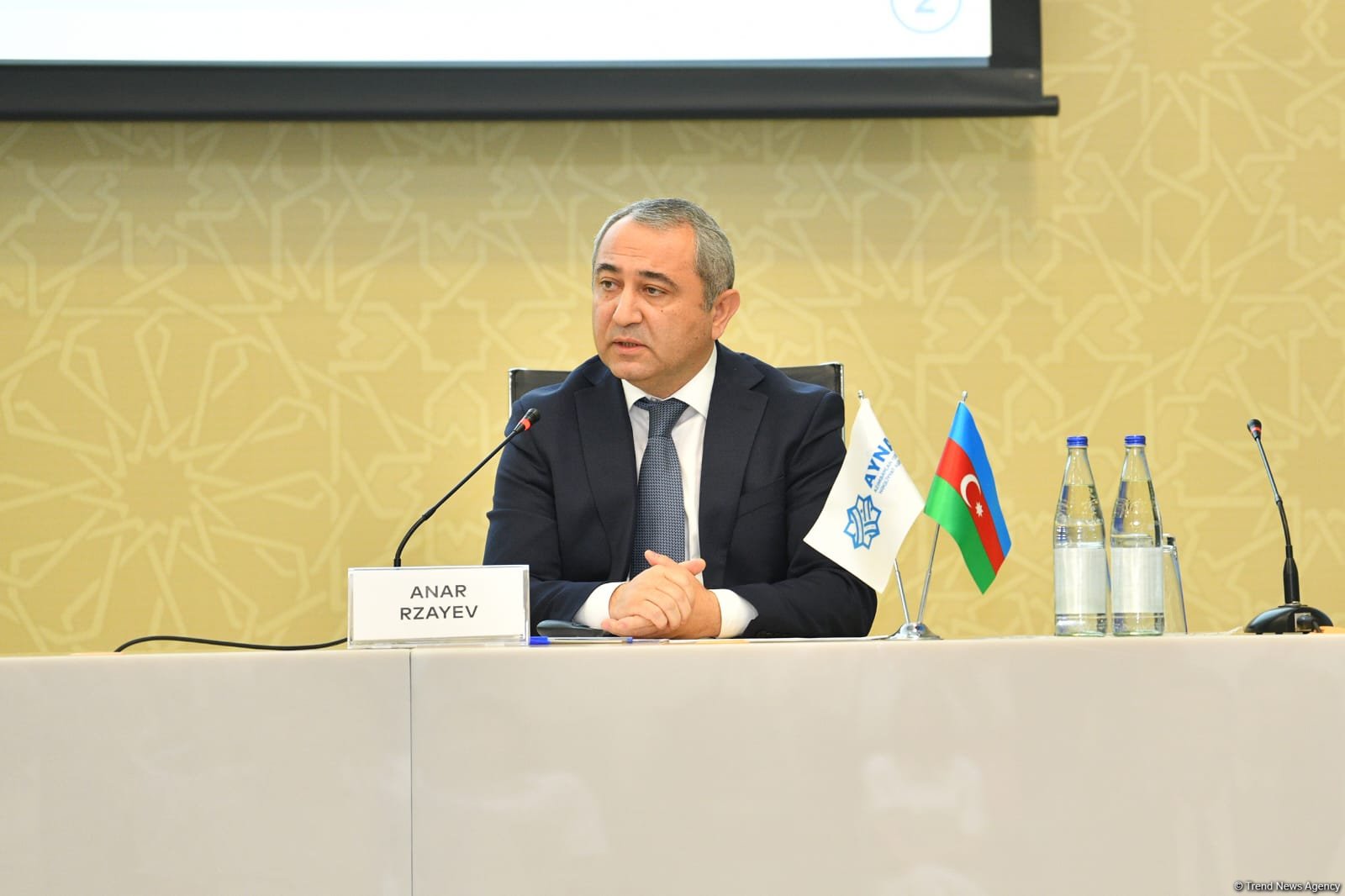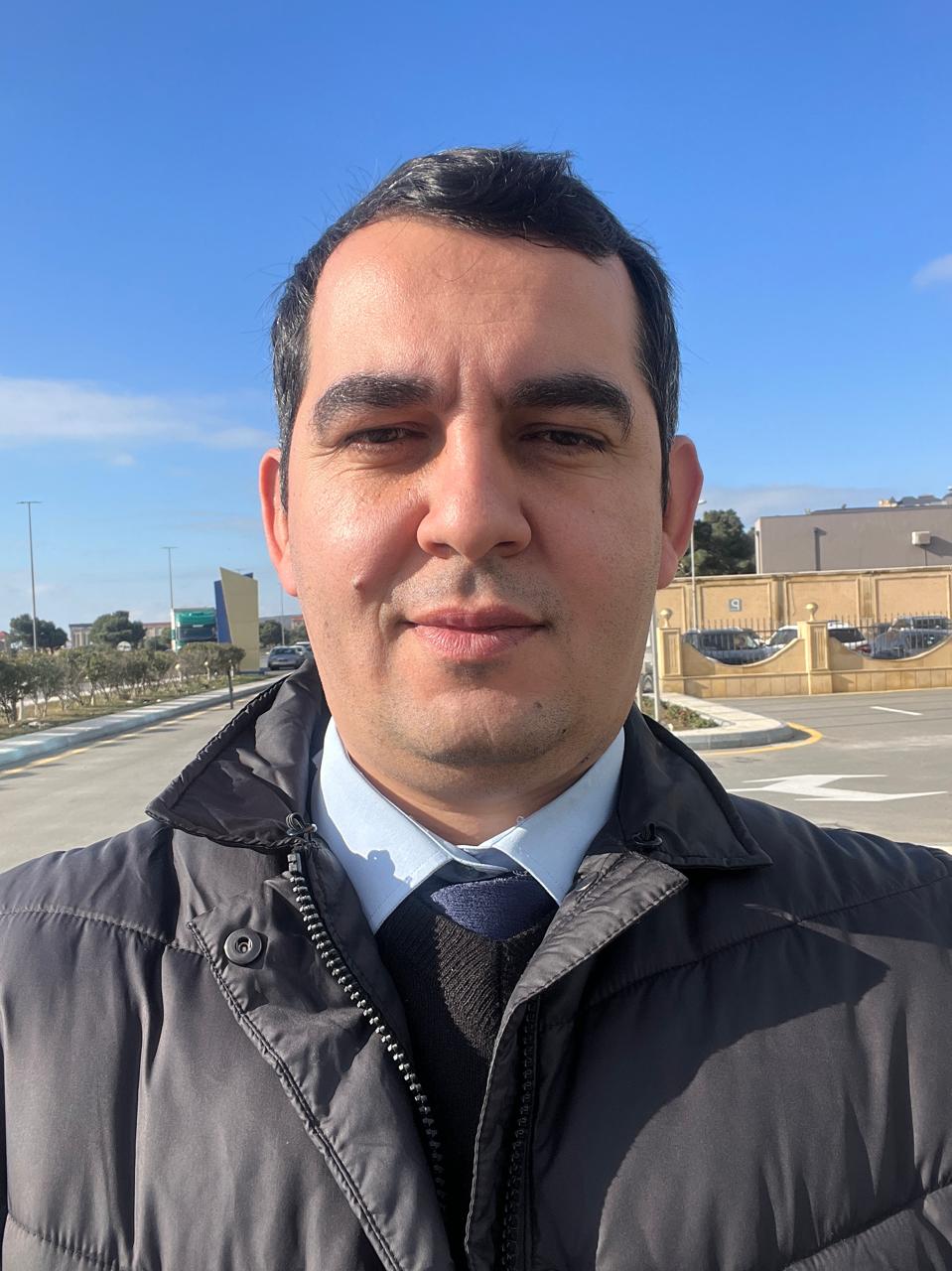BAKU, Azerbaijan, February 3. The Azerbaijan Land Transport Agency (AYNA) reached record-breaking figures across several sectors of the country’s transport system last year, a result of extensive efforts and strategic work, the Chairperson of the Agency Anar Rzayev told Trend.
Rzayev highlighted that any reforms, projects, or decisions are the result of immense labor, long-term discussions, and thorough analysis.
“Everything currently being discussed is not about a rush to radically alter the established system in a short time, but rather about the long-term development strategy that was established nearly two decades ago. This strategy, and the consistent execution of tasks set by the President at the beginning of these comprehensive reforms across all sectors of life in the country, is now bearing fruit. It was during this time that decisions were made to fundamentally modernize the nation’s transport system, including that of the capital, with the goal of transforming Azerbaijan into an efficient transport hub, leveraging its advantageous geographical location and transit potential. Today, we see the results of this far-sighted policy, as Azerbaijan has become a key player in numerous global transport projects connecting regions and continents.
As part of the work carried out over the years, significant focus has been placed on improving Baku’s road and transport infrastructure. This focus has been driven by the rapid socio-economic development, the increase in business activity, the establishment of new enterprises and institutions, and the creation of job opportunities—all of which demand a higher degree of mobility within the capital.
Of course, progress continues. The projects implemented over the years to enhance the city's transport infrastructure have resolved many pressing issues, such as alleviating congestion on major streets and avenues through the construction of new roads and interchanges. However, the transformation of urban mobility now involves tackling new challenges. These include improving the efficiency of public transport amid a reduction in private car and taxi usage, fostering the development of micromobility, and expanding pedestrian zones. These measures also contribute to promoting a healthier lifestyle and creating a more comfortable urban environment. This approach mirrors the path taken by many leading cities around the world," he said.
According to him, based on a thorough analysis involving both local and international specialists from relevant sectors, projects and programs were developed, and their implementation has addressed some short-term challenges. Work on other areas and the execution of long-term goals is still ongoing.
Rzayev also mentioned that record achievements were reached in several areas of the transport sector.
"Last year, we managed to achieve record results in multiple areas of the transport sector, which was a logical outcome of our large-scale efforts. It's worth noting that, as a result of increased bus ridership, 476 million passengers were transported in Baku in 2024, which is 28 million more than in 2023. Overall, passenger transport in the capital and its suburbs grew by 9 percent, totaling 518 million passengers. Additionally, bus transport by BakuBus increased by 20 percent, or 148 million passengers. This success was driven by several factors, including the optimization of the public transport system and the creation, consistent expansion, and coordination of dedicated bus lanes throughout the capital. Our specialists’ monitoring shows that the average speed of buses on these lanes increased from 18 km/h to 22 km/h, while travel times on certain streets decreased by 12 minutes, and on others, by as much as 22 minutes. This means that on most routes, the interval between buses was significantly reduced, addressing issues that previously led to many passenger complaints and boosting the number of passengers. As you can see, the key factor behind all these statistics is the growing trust of passengers in public transport. There is now a clear understanding that buses can get people to their destinations faster, without the stress of monitoring traffic, finding parking, and dealing with other problems faced by private car drivers. Recently, even frequent car users have started opting for buses, particularly for short and medium distances. We have achieved true citizen satisfaction, not through words, but through action. A major factor in the improved efficiency of bus lanes has been the enhancement of legislation, which has nearly eliminated cases of other road users occupying these lanes," the chairperson said.
He also shared statistics regarding the newly installed bus lanes in Baku:
"Currently, under the new route network, special lanes totaling 112 kilometers cover nearly 40 streets and avenues in the capital, with buses traveling along them carrying about 900,000 passengers each day. But of course, this is not the end, and our specialists continue to work on projects to expand the bus lane network."
Rzayev also addressed the topic of new bus purchases and the introduction of new routes.
"Updating the bus fleet is a top priority. The new buses, equipped with environmentally friendly technologies, are not only comfortable and quiet but also provide an exceptionally convenient experience for passengers. You’ll agree that the 160 electric buses recently launched into service blend seamlessly with the evolving cityscape. Even their color serves as an additional testament to our country’s commitment to the green agenda. It is encouraging that private transport companies, in line with this trend, have also purchased 85 eco-friendly buses and are gradually putting them into operation. This year, these companies plan to add more than 100 new buses to the fleet. Additionally, over two hundred buses have been repaired and returned to service, bringing the total fleet to a record 2,160 units. In the near future, we aim to expand this number to 2,500 buses. The new buses are equipped with validators for cashless payments, accelerating the digitalization of services. Notably, by the end of 2024, cashless payments made up 77.5 percent of all transactions.
Regarding the creation of new routes, this process continues based on analyses conducted by our specialists aimed at optimization. The goal is to ensure the route network covers as much of the population as possible. Last year, over a dozen new routes were introduced, including two connecting the metro stations '20 January' and 'Avtovagzal' with Sumgayit. These buses now serve more than 12,000 passengers daily, with travel times of approximately 30 minutes each way. Responding to numerous requests from the residents of the village of Saray, a new regular route was also launched from this settlement to the '20 January' metro station. Now, buses on four routes heading to Sumgayit and Saray carry more than 25,000 passengers daily. These routes have become incredibly popular.
The launch of three new hubs last year—near the Ganjlik and 28 May metro stations, as well as at the southern exit of the Koroglu station—has further enhanced mobility. The latter two are multimodal hubs, incorporating railway, metro, and bus stops," he added.
On the changes in the taxi services sector, Anar Rzayev emphasized that these significant reforms are the result of decisive and effective regulatory measures, coupled with the digitalization of control mechanisms, which have successfully brought order to the taxi service industry.
First, the implementation of strict legislative requirements prohibiting the use of taxis older than 15 years has helped eliminate both traffic congestion and deteriorating vehicles that were literally falling apart. These outdated cars have been replaced with new, mostly hybrid and electric vehicles, all painted the same color—white. Of the taxis granted permits, 35 percent were manufactured between 2020 and 2024, which has had a positive impact on the environment. Second, around 35,000 drivers have participated in the training programs organized by our agency. Some of these drivers began their work only after successfully passing exams and receiving a special card and certificate. This initiative has played a crucial role in significantly enhancing the quality of service and customer care, effectively ending instances of unethical behavior. Additionally, we are continuing the expansion of special taxi stands across different areas of the city, with ongoing efforts to identify the most strategic locations for these stands," Rzayev said.
The chairperson also discussed the ongoing improvements aimed at fostering micromobility usage.
"The rapidly growing popularity of micromobility in our city is driven by the accelerated development of infrastructure. Moreover, legislative improvements in this area have clarified the definitions of small electric vehicles and their operators, while also introducing 'bicycle' sections at traffic lights and other supportive measures. This reflects a comprehensive, integrated approach. Micromobility isn’t just an alternative for short-distance travel—it’s also a commitment to a healthier lifestyle and cleaner air.
Our specialists continue to refine the conditions for micromobility vehicles. This includes expanding the network of bicycle lanes, adding road markings, installing new signage, and integrating the dedicated sections at traffic lights. Furthermore, bicycle parking stations are being set up throughout the city, and in August, we launched a bike rental service alongside a mobile app that has significantly improved accessibility.
We are also seeing successful progress with the establishment of parking spaces for electric scooters. As of now, operators have rented out 4,760 vehicles, of which 3,860 are scooters, 700 are bicycles, and 200 are electric bikes. The demand for personal micromobility vehicles is growing daily, with statistics showing a consistent rise in their popularity. From September through December, operators processed 850,944 orders, and these vehicles collectively traveled 2.2 million kilometers—an impressive feat. Imagine that just a few years ago, such a vast distance would have only been covered by cars. This surge in micromobility use is positively impacting traffic flow, especially in the city center.
I would like to emphasize a crucial point: urban transport is an immense, dynamic system that is always evolving. The process of enhancing and modernizing this system never truly stops—it’s a continuous journey with brief pauses between phases of renewal. For this reason, the work of our specialists, in collaboration with experts from other specialized agencies, is almost uninterrupted. I’m confident that when we meet again, we’ll have even more impressive figures and statistical data to share," Rzayev concluded.







